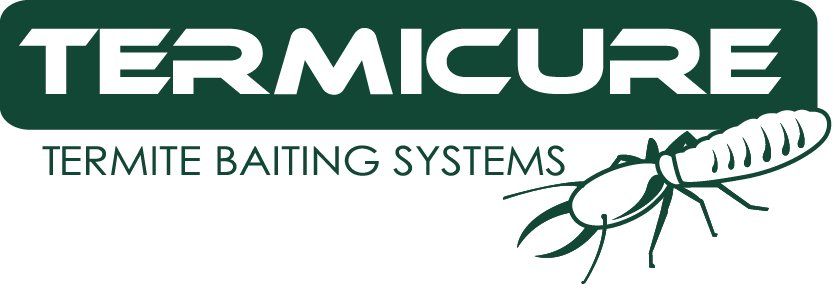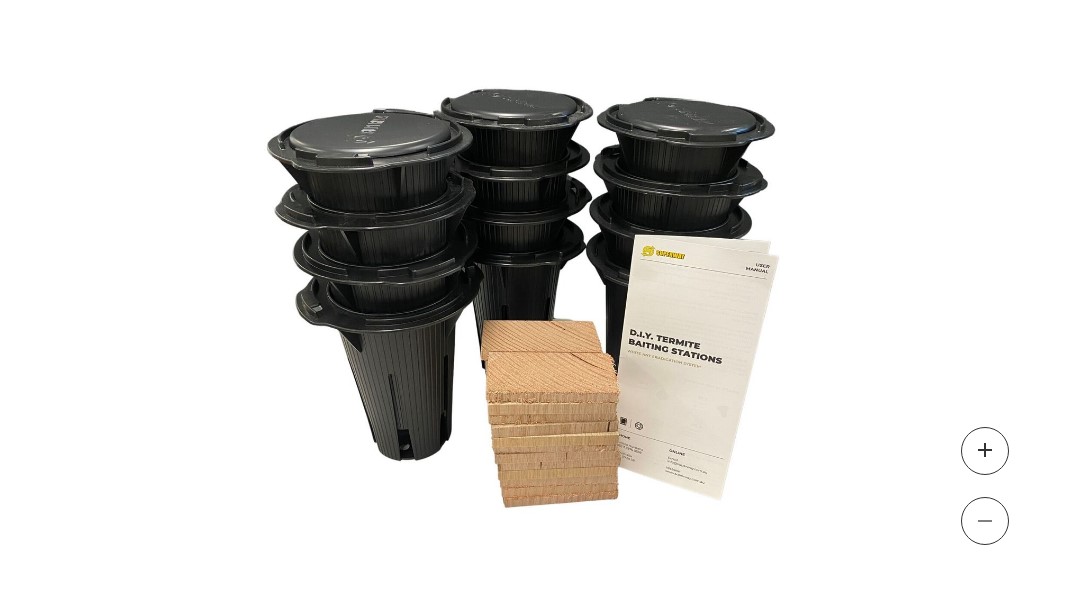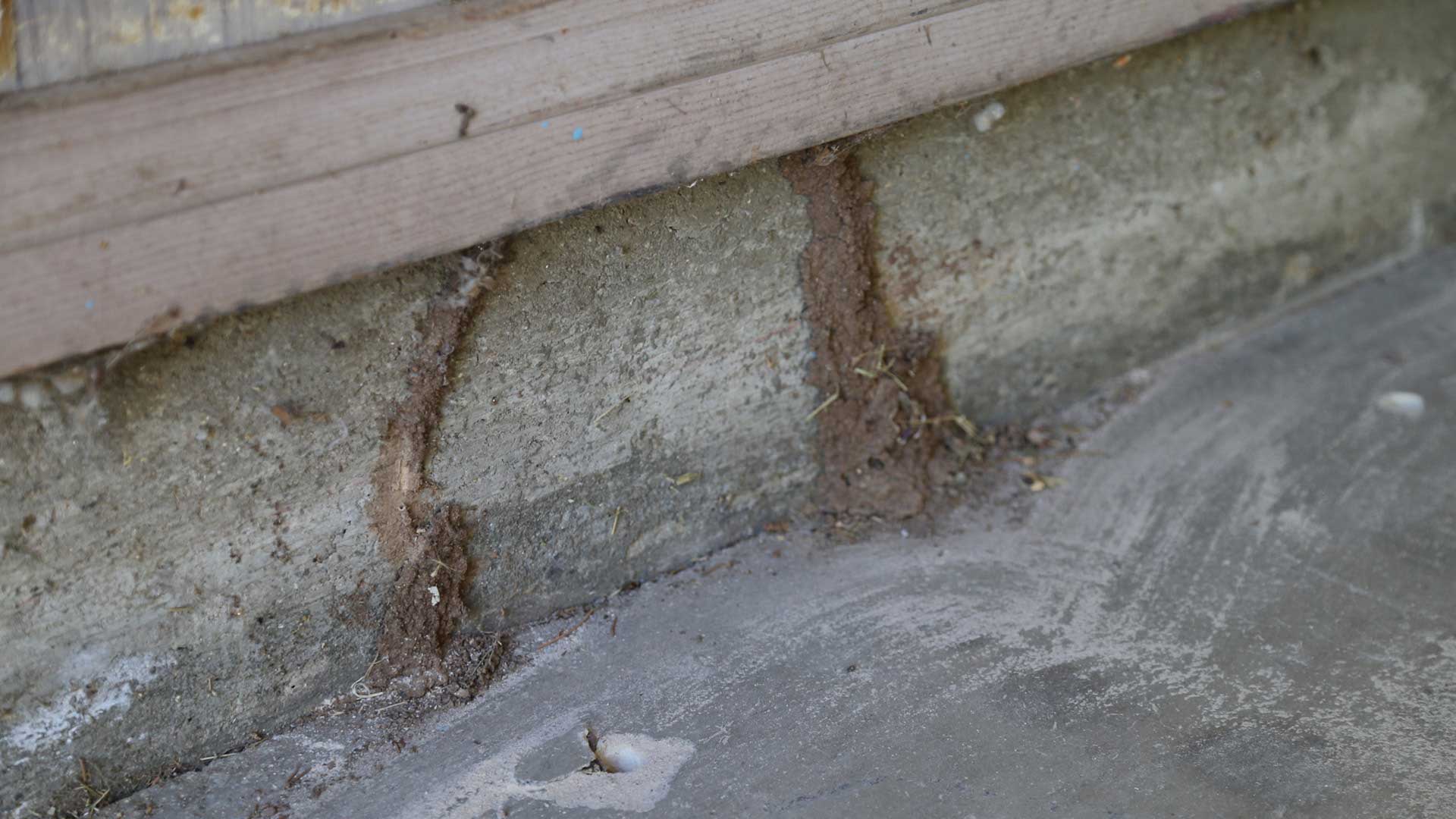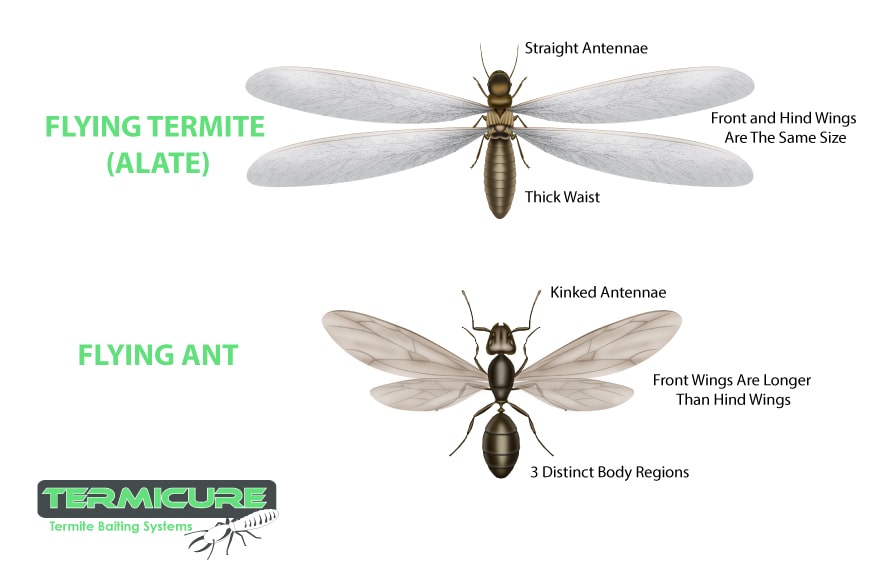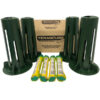The two methods of termite management around the home, are Termite Barriers, (chemical Soil Treatment), or Termite baits, but the question is whether the DIY Termite Barrier is going to provide better protection than a DIY Baiting installation.
So lets start with the processes with the DIY Termite Barrier first…The installation of the DIY termite barrier requires the use of specialised pump equipment, along with a bulk tank and various injection tools. These items can be purchased, but the cost of the average setup is around the $5k mark. Putting it simply, this initial outlay usually puts the DIY Termite Barrier installation out of reach of the average homeowner. The installation process entails the trenching of soils down to the footing, and past approximately 80mm. Once all soil and debris (including brick debris/mortar or render slag), the trench is then flooded with a Termiticide mixture. Once the trench has been flooded with a minimum of 5 litres per lineal metre (Trench depth depending), the trench is then backfilled with the soil removed, or with a sandy loam, depending on the soil conditions of the site. As the backfill process is taking place, the soil is also treated prior to backfilling.
Now this all seems fairly straightforward for the DIY Termite Barrier Installer, and it is. It’s labour intensive, but the handy DIY Termite barrier installer will be able to undertake this task without too many dramas.
The next part of the DIY Termite Barrier installation is where things become a little tricky, and the specialised tools become necessary. Where concrete abuts the structure (driveways/patio’s etc), holes must be drilled through the concrete into the ground at specific centres. These holes are then injected with the Termiticide into the soils below with special injection tools. Depending on depth of footing, a minimum of 10 litres per lineal metre of perimeter is to be injected under pressure so that all of the soil abutting the structure is treated. once complete, purpose made concrete seals are inserted to cover the holes.
Now, we don’t encourage the DIY Termite barrier installation, as termite specialists require specific licensing and experience to do the job properly. DIY Termite Barrier installation requires specific products and correct procedure to gain the protection sought by the homeowner.
The DIY Termite Baiting process is a far less critical one, wit only basic tools required, and no specific licensing to install a a system around your own home. The added bonus os having access to termite specialists to assist with your installation and management with Termicure makes the whole issue much simpler than trying to correctly, and economically install a DIY Termite Barrier.
For further tips and advice on DIY Termite Barrier installation, please contact us here at Termicuretermitebaits.com.au, or email info@termicure.com.au
